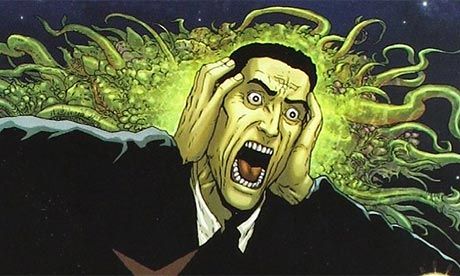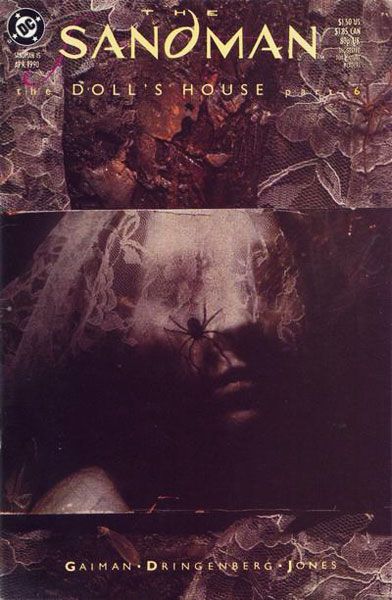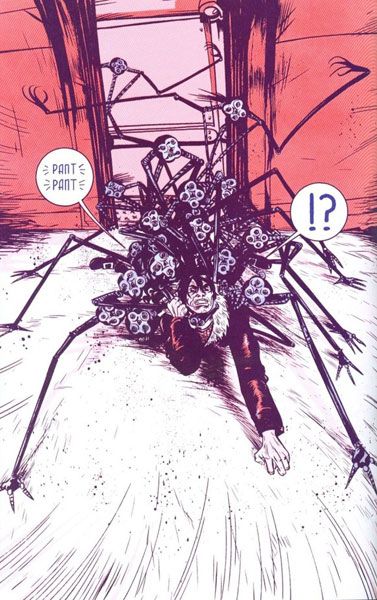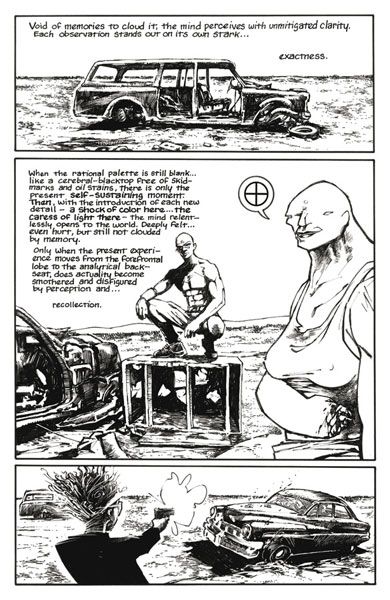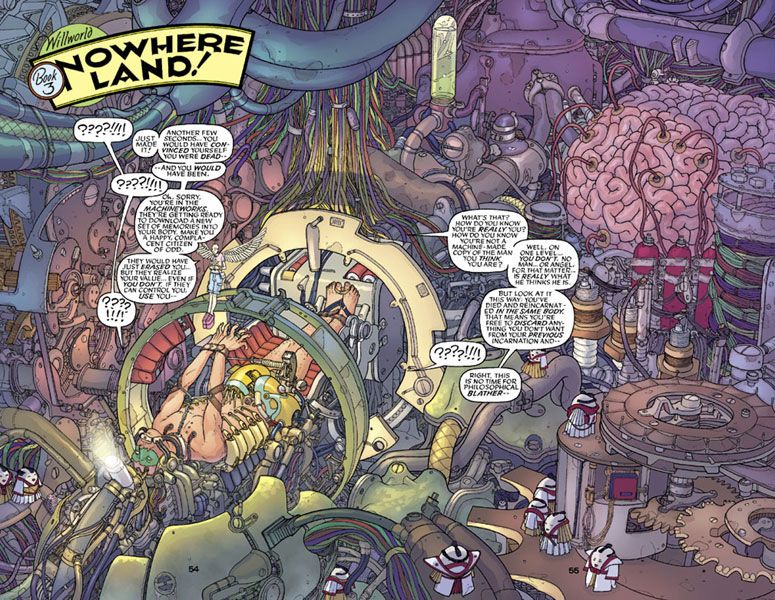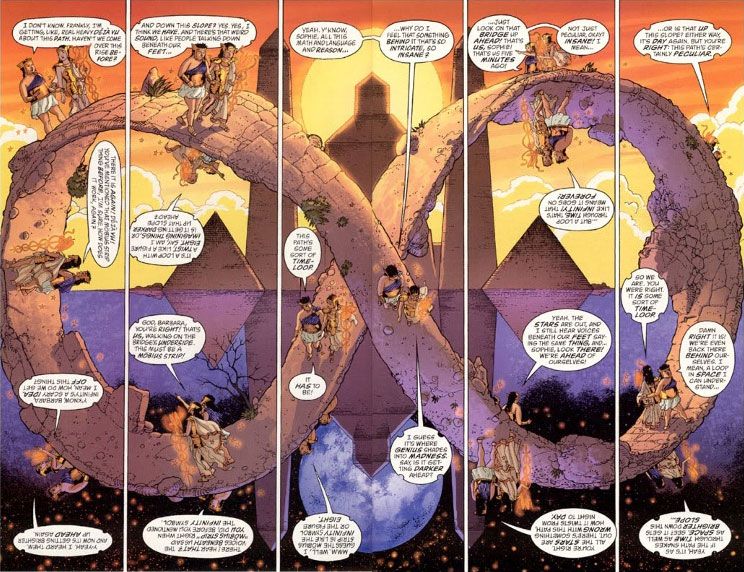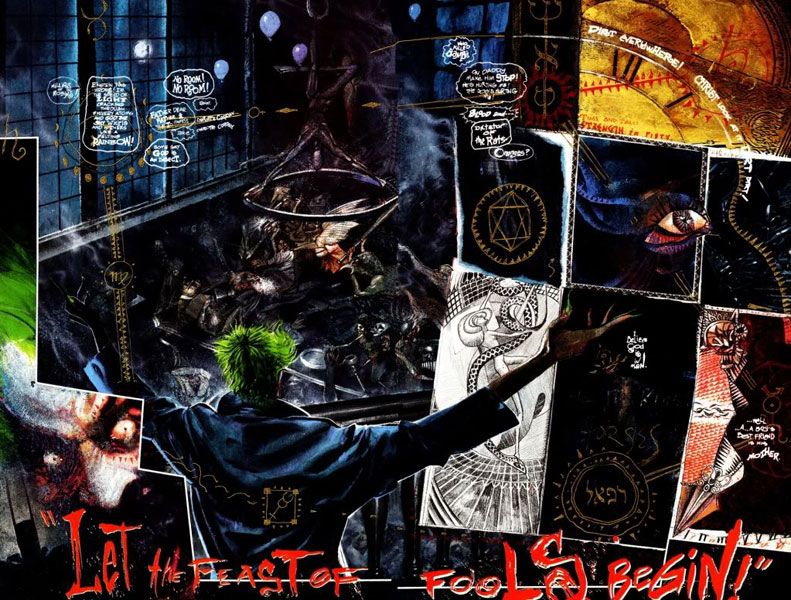Recently I’ve been revisiting the surrealist comic book authors who have successfully conveyed the kind of disruption of reality which I experience in dreams. I want to pinpoint the ways in which they have been able to successfully communicate and provoke a kind of emotional dissonance with their work.
Neil Gaiman (and by extension, artist Dave McKean) immediately comes to mind, specifically on his long-running and groundbreaking series; The Sandman, but also in works like Black Orchid and The Books of Magic. In many ways this is the most linear representation of truly surreal environments that I can think of. He provides us with entire universes of insane, nonsensical, mythical imagery and logic, but he presents each story in a very direct, linear manner. His way of telling a story in this context is very much like a fairytale, with one event leading inevitably to the next, it is deceptively comfortable, almost hiding the craziness inside. When he does move the storyline towards something more evocative of chaos (i.e. towards the end of the books) he still lays all of the elements out carefully so that by the end the reader can happily piece together a logical continuity (that is to say it is logical within the context of the universe he has created).
Alan Moore would be my next and most enjoyable weaver of many different kinds of surrealist experiences. From horror comic books like Swamp Thing or Neonomicon, to adventure comic books like Promethea or League of Extraordinary Gentlemen he is always finding new ways to play with our perspective of reality. In every story he writes he takes us to places within ourselves which we might not be aware of, viscerally changing us. Moore’s ability to create a surreal environment in an organic fashion, escalating the experience gradually so that eventually we’re neck deep in his insanity and the unknown, is part of the magic he works with his writing. Layering his stories to gradually unfold and reveal each secret to us as we read is yet another way in which Moore draws us closer to the flames of his stories. It is the things we don’t know or understand about our primal existence which are the most disturbing to us and by leaning into this human tendency, Moore compounds the impact of his work by making it feel personal and intimate.
Paul Pope’s work on Heavy Liquid is probably one of my favorite unfulfilled science fiction stories. I say unfulfilled because we’re never actually allowed to perceive the aliens or understand their communique. Beautifully and lovingly crafting a relatable but strange futuristic society, Pope shows us a reality where aliens’ transmissions are experienced by humans (and interpreted by them) as simply an inexplicable drug high, with every aspect of the story building to a gradual growing awareness of this alien communication. Just as our protagonist is grasping at answers and ready to open the doors of perception as it were, the story ends and it is this untold aspect of the story fascinates me. By never actually revealing the full impact of this alien contact, or what they’re trying to say to us, Pope works a tantalizing trick. While it is somewhat frustrating, it is actually absolutely essential in order to allow us as readers to create a more tangible interpretation of the aliens in our own imagination.
Ted McKeever’s science fiction comic books are almost all uniformly dirty, nasty, confusing and very, very surreal. Books like Meta 4, Metropol, Plastic Forks and many more give us glimpses of wild, untamed, post-apocalyptic worlds. In each he depicts civilizations so different and strange from our own that only showing us glimpses of them is enough to reveal how confusing and upsetting life there is. Without the basic logic of human interaction, let alone the logic of physics, we’re forced to read carefully and try to empathize with the poor, lost characters in order to understand their struggles. In the same way that Luis Bunuel and Dali’s groundbreaking surrealist film Le Chien Andalou provokes deep emotions of loss and confusion by showing us dissonant imagery, McKeever gives us just enough information to know that we are not standing on solid ground, that in his universe nothing will make sense or functions in the way that we expect.
Seth Fisher's work on Green Lantern: Willworld stands out amongst superhero books for it’s fantastically immersive visual trip of a story (though all of his books have a surreal style). Along with colorist Christopher Chuckry, Fisher crafts a gorgeously psychedelic journey for our hero, throwing him (and us) from one crazy situation from another. Using massive scale disruption, dramatically changing angles, and incorporating expressive graphics the dream-like state of the story is clear. There is no unifying logic to the imagery, as in a happy dream there is dissonance and whimsical chaos throughout. It is Fisher’s talent for this style which made him such a pleasure to read. One of his loveliest, most dream-like tales was his work on a Batman comic book written by J.H. Williams (more on him later); Snow. There, Fisher took what could have been a classic back-story of the detective’s past and imbued the book with the tragic sadness of lost dreams and barely-glimpsed nightmares.
J.H. Williams ability as an artist to convey the eerie, lost quality of dreams is utilized perfectly in books like Promethea, Batwoman, and Seven Soldiers just to name a few. His evocative water colors and dramatic, inventive use of panel arrangement are clever tricks of storytelling, but it is his talent as an expressive artist which really stands out. Williams ability to depict complex situations and emotional journeys for multiple characters is due in large part to his willingness to play so fluidly with viewpoints and movement. The flow which he creates moves us through his stories gently, easing us into a false sense of security as reality shifts under our feet. With the true eye of a surrealist, Williams darkly playful art dances across the page to conclusion, weaving a world where artifice and truth merge seamlessly.
Grant Morrison’s writing definitely aspires to be surreal in places, but in many ways this is the most elegantly simple of styles cited here. It is his ability to convey empathic stories from the point of view of the mad which stands out, i.e. things seem less insane because to the characters they make so much sense. It is almost as if we're being shown the world not through a warped mirror, but directly through the eyes of someone else - and to that person it all seems quite normal. Somehow in the most natural way he entices us to feel compassion and care for the least reasonable of characters doing the most outrageous things. This talent comes to the fore in an old book of his; Arkham Asylum, in which Dave McKean as artist does the heavy lifting in terms of communicating the horror and broken surrealism of the asylum environment (as he did for Gaiman on Black Orchid). Morrison’s ability to have us care about and feel pity for these broken villains, and to firmly grasp the connection to Batman as their erstwhile hero is the sleight of hand here. Despite every terrifying aspect of the asylum, there is a logic and sense to the characters' journey within the faulty logic of their world.
In many ways these story tellers are working a kind of magic by weaving entirely new realities for us to inhabit and experience. While the above authors are just a few of my own favorites, if you can think of others who you feel successfully convey surrealism in comic books, please note them in the comments below. Thank you!

